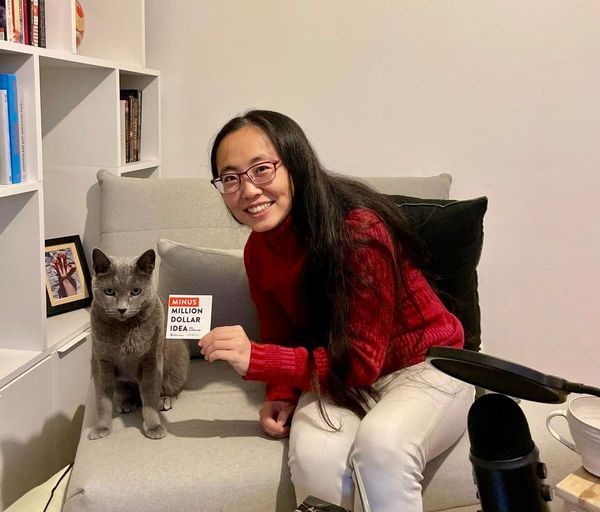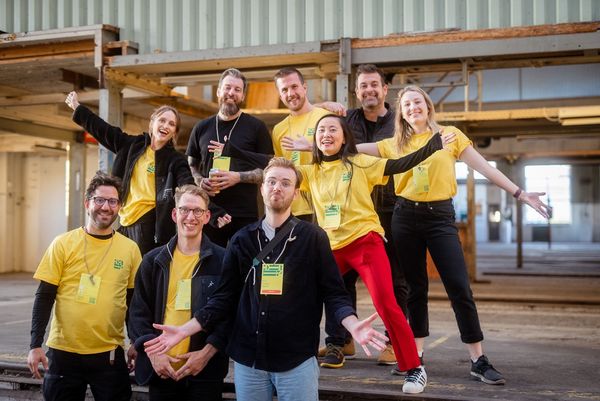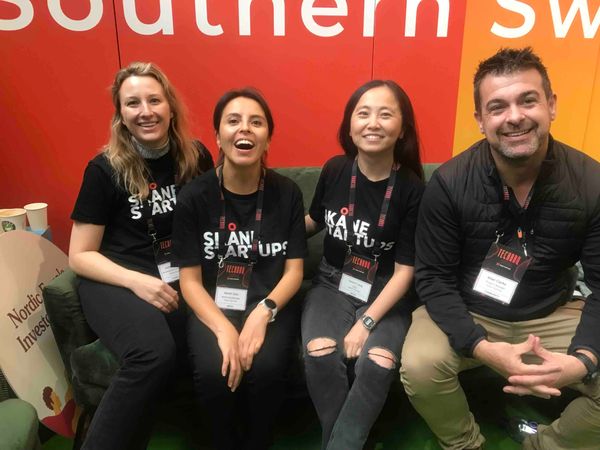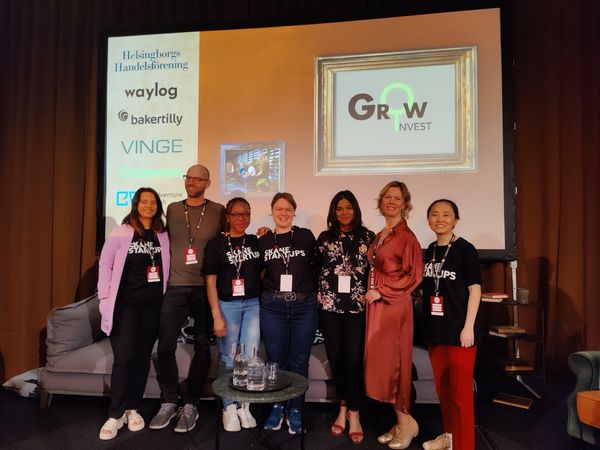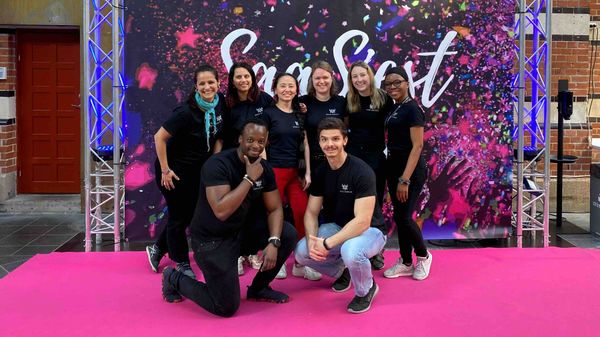I've studied design thinking during my Master studies and I've applied the methodology when building my own business. This course by Professor Jeanne M. Liedtka offers a basic understanding of design thinking and innovation and I found the content quite insightful. Below are a few key takeaways from the course.
"Innovation is not a black box"
Professor Jeanne talked about the "Moses Myth" of innovation and she explained that innovation does not depend on one special person. I agree with what she said that you and your team first need to develop a clear understanding of the current reality to innovate. The design thinking's data-intensive and user-driven approach allow you to achieve that first step.
The first step is to ask "What is" and clearly define the problem. According to Gregory Treverton, there are two types of problems:
- "Puzzles are problems where when you have the right level of data disclosure, when you have that absolute number, the problem can be solved."
- "Mysteries are problems that there is no level of data disclosure that will actually solve the problem. Or there might be too much data, and it's about interpreting all of the data that's there. And that's a richer, harder problem that requires more system thinking. That requires protopyting and piloting. It's just about trying different things and experimenting, and trying to move forward towards a solution."
Or you can categorize the problems to wicked problems (how to address healthcare issues in the US) and tamed problem (how to win in the League of Legends).
Why should we have a clear understanding of the problems?
"Design thinking helps us ask better questions. Questions that expand the boundaries of search itself."
- "First, it helps broaden and perhaps even change completely our definition of the problem or opportunity we want to tackle.We can unwittingly throw away all kinds of opportunities for innovation before we even get started if we adopt too narrow or too conventional a definition of the problem."
- "Second, this attention to the present helps uncover unarticulated needs, which are the key to producing the kind of innovative design criteria that generate really differentiated solutions. And those are the kind that we want to build profitable businesses."
To understand if design thinking is appropriate to solve a specific challenge, we should ask ourselves:
- Is the problem human-centered?
- How clearly do you understand the problem itself?
- What is the level of uncertainty?
- What data is already available to you?
After identifying what kind of problems and challenges that we are facing, we should ask the second question: "What if?"
"What if anything were possible? Design thinking is also possibility-driven. It uses this information we've learned to ask the question, what if anything, were possible? As we begin to create new ideas about how to serve them."
This leads us to brainstorm for a better solution to address the next questions we should ask ourselves "What wows?" and "What works" and there are the principles we should be aware of:
- Work and fast feedback cycles.
- Minimize the cost of conducting experiments.
- Fail early to succeed sooner and test for key trade-offs and assumptions early on.
Design Thinking Process
Before you begin
- Identify an opportunity
- Scope your project
- Draft your design brief
- Make your plans
What is?
- Do you research
- Identify Insights: use open-ended ambiguous stimuli to attempt to get at hidden or deeper thoughts.
- Establish Design Criteria
What if?
- Brainstorm ideas
- Develop Concepts
- Create Some Napkin Pitches
What Wows?
- Surface Key Assumptions
- Make prototypes
What works?
- Get feedback from stakeholders
- Run your learning launches
- Design the on-Ramp
According to Daniel Pink, design thinking skill is undervalued in a whole range of business functions. He said that "symphonic thinking ability which is big picture thinking, pattern recognition, multi-ness, multi-discipline, multi-cultural, multi-lingual, a sense of breadth" and "empathetic skills which is the capacity to stand in someone's shoes, see with their eyes, feel with their hearts" are skills that hard to routinize, therefore, difficult to automate or outsource for organizations. Yet these skills can be competitive advantages for organizations.
Design thinking is not just about process and questions, it's also about people.
"Design thinking is not just the people you're trying to serve, it's also about you and the mindset, with which you approach innovation. Innovation starts inside, not outside. " However, Professor Jeanne points out the opportunities to innovate are everywhere, yet our minds are not prepared to see them. In her research project, she studied how great growth leaders drive the companies to achieve superior organic growth. She found out that "most of these managers, it turned out were succeeding, in spite of their organizations, not because of them." Those innovative managers understand the natural law of innovation - the only certainty is uncertainty.
The large organizations are designed to produce standardized results and operate in an environment of predictability. They hire managers who "excel at execution, and at driving waste and variation out of the system, and they have a state of the art tool kit for accomplishing this. But unfortunately, the pursuit of innovation is inherent, messy, and inefficient. Unlike execution, exploration is a high variance activity." For example, there are important differences between managers who have promotion and prevention focus.
- People with a promotion focus are motivated by some kind of new and exciting end state which leads to a concern with advancement, growth, and accomplishment. Promoters prefer errors of commission because they incline to act, to pursue multiple avenues to reach this goal.
- People with prevention focus are motivated more by avoiding negative outcomes, and so are concerned with protection and safety. Preventers prefer errors of omission. Choosing instead not to even act to minimize the possibility of a negative outcome.
Why is innovation is hard to do in a large organization?
- "They only chase big ideas. But if an opportunity is big and obvious, chances are, that somebody else has already seen it. Human beings, customers, in particular, are terrible at envisioning things that don't already exist."
- "When the ratio of resources invested gets too far ahead of knowledge possessed, bad things happen. They are obsessed with analysis. But there are limits to the power of analysis. Exploring new opportunities always involves, making decisions under conditions of uncertainty, which raises the challenge, of how do we take data from a known past and connect it intelligently, to an unknown future."
How to become an innovation enabler?
- Widen your skill repertoire. "Learn to look for patterns and interconnections between seemingly disparate ideas or functions or people or options, and then build on them."
- Be empathetic and listen. "The word is empathy, not just customer focus. Every company believes it cares about its customers. But in many of the organizations we work with, being customer-focused, amounts to trying to shove products more effectively at people, using a variety of segmentation schemes and emotional advertising. And empathetic orientation towards customer looks completely different. It involves, being deeply interested in details of their lives, as people, not as categories of consumers. Understand what customers are trying to accomplish, not necessarily what they say they want."



